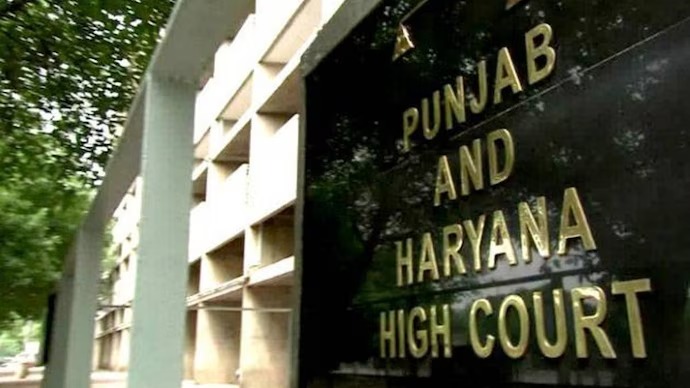Tambe, J.@mdashThis is defendant''s application u/s 115 of the Civil Procedure Code. On May 4, 1957, opponent Kesharbai filed a civil suit against the defendant Jairam in the Court of Civil Judge, Junior Division, Achalgur, praying that she be restored to possession of the field in suit. In that suit" the defence raised was that he was a protected lessee within the meaning of the Berar Regulation of Agricultural Leases Act, hereinafter referred to as the Leases Act, and he is, therefore, not liable to be ejected. He also made an application u/s 16A of the Leases Act praying that reference be made to the revenue Court for decision of the issue as to whether he is a protected lessee or not. That application, was allowed, and reference was made on October 8, 1957. During the pendency of that reference before the revenue Court the Bombay Tenancy and Agricultural Lands (Vidarbha Region & Kutch Area) Act, Act XCIX of 1958, hereinafter referred to as the Bombay Tenancy Act, came into force on December 30, 1958. The defendant then made another application on April 20, 1959, u/s 125 of the Bombay Tenancy Act stating therein that he is a tenant within the meaning of that Act and, therefore, reference as required by Section 125 be made to the Tahsildar for decision of the issue as to whether he is a tenant within the meaning of the Bombay Tenancy Act. This application has been rejected by the trial Court. It is against this order that the defendant has preferred this revision.
2. Mr. R. N. Deshpande, learned counsel for the applicant, contends that the provisions of Section 132(3)(b) of the Bombay Tenancy Act are attracted to the facts of the present case. The reference made by the civil Court u/s 16A of the Leases Act was pending before the civil Court on the date the Bombay Tenancy Act came into force and, therefore, the provisions of Section 125 of that Act are also attracted to the facts of the present case. According to Mr. Deshpande, it was incumbent on the Civil Court to make reference to the Tahsildar u/s 125 of the Bombay Tenancy Act. I find it difficult to accept the contention of Mr. Deshpande.
3. Sections 132, 125 and 124 of the Bombay Tenancy Act have been construed by a Full Bench of this Court in
...It is, however, a well settled rule that unless the Legislature directs otherwise, every suit must be decided by reference to the law in force at the date of the suit. As observed by the Supreme Court in
Thus, the ratio of this decision is that unless it can be shown that any proceeding under any of the enactments repealed is pending before a civil or revenue Court, the provisions of the Bombay Tenancy Act would have no application to the case. The extent of retrospective operation of the provisions of the Bombay Tenancy Act to a proceeding under any of the repealed enactments pending in a civil or a revenue Court is detailed in Sub-section (5) of Section 132 of the Act. Clause (a) of Sub-section (5) of Section 132 deals with a proceeding pending in a revenue Court and cl. (b) deals with a proceeding pending in a civil Court. It reads:
Notwithstanding anything contained in sub-section (2) -
(a) ...
(b) in the case of any proceeding under any of the provisions of the enactment so repealed, pending before a civil Court on such date, the provisions of section 125 of this Act shall apply.
It is not in dispute that prior to the Bombay Tenancy Act came into force reference had already been made by the civil Court u/s 16A of the Leases Act and the same was pending before the revenue Court. It is the contention of Mr. Deshpande that in view of the order made by the civil Court on October 8, 1957, referring the issue as to the status of the defendant to the revenue Court proceedings under the Leases Act were pending before the civil Court. It is not possible for me to accept this contention.
4. Expression ''proceeding'' used in relation to a Court or a judicial tribunal means any action and does not mean any step in an action. Oxford Dictionary defines proceeding as instituting or carrying on of an action at law; a legal action or process. Here, the suit has been instituted by the plaintiff under the general law of the land. The action thus is not instituted under the provisions of the Leases Act. It is true that defence has been raised by the defendant that he is a protected lessee and that defence is founded on the provisions of Section 3 of the Leases Act. But that would not convert a suit instituted under general law of the land into a suit under the Berar Agricultural Leases Act. A similar argument had been advanced before the Full Bench and was negatived. The learned Chief Justice in dealing with it observed (p. 511) ;
The suit was an ordinary ejectment suit filed by the landlords under the ordinary law in order to obtain possession of their lands from their tenants. It was not a suit under any of the enactments which have now been repealed. In this suit, the defendants claimed certain rights conferred by the repealed enactments. Mr. Abhyankar has contended that as rights were claimed under the repealed enactments, the suit must be deemed to have been instituted under the provisions of those enactments. This argument cannot be accepted.
The contention that the provisions of Clause (b) of Sub-section (3) of Section 132 of the Bombay Tenancy Act are attracted to the facts of the present case, therefore, cannot be accepted. It falls under the provisions of Sub-section (2) of Section 132 and shall be disposed of as if the Bombay Tenancy Act had not been passed.
5. In result, the application fails and is dismissed with costs.

